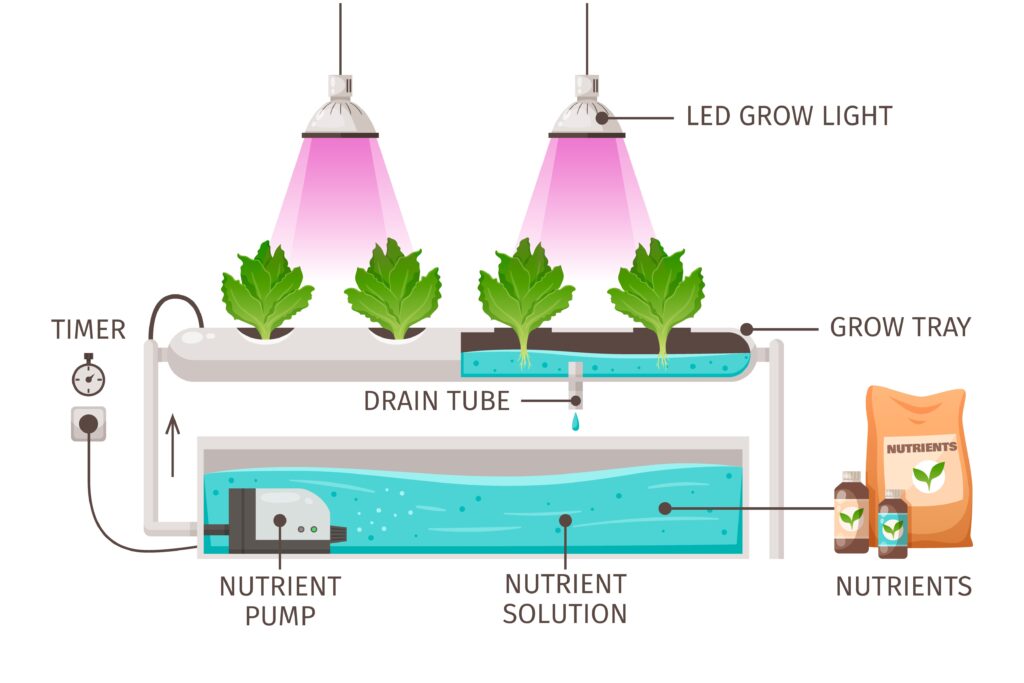By using a combination of technology, hydroponic systems allow farmers to grow more food with less effort and water.
Here’s how it works:

- Growing Trays: Seeds are placed into growing trays like foam, which hold the plants in place. The roots grow towards the water to absorb nutrients.
- Nutrient Solution: The water in hydroponics isn’t just plain H₂O. It’s enriched with nutrients like nitrogen, phosphorus, and potassium, and trace elements like calcium and iron.
- Sensors: A moisture sensor constantly checks how much water is present in the tray. When water runs low, it triggers the nutrient pump to send the nutrient-rich water to the plants.
- Timers and Lights: A timer controls when the system’s special lights turn on and off, helping the plants grow even when the sun isn’t shining. It also manages when the nutrient solution is pumped to the plants, making sure they get what they need without manual intervention.